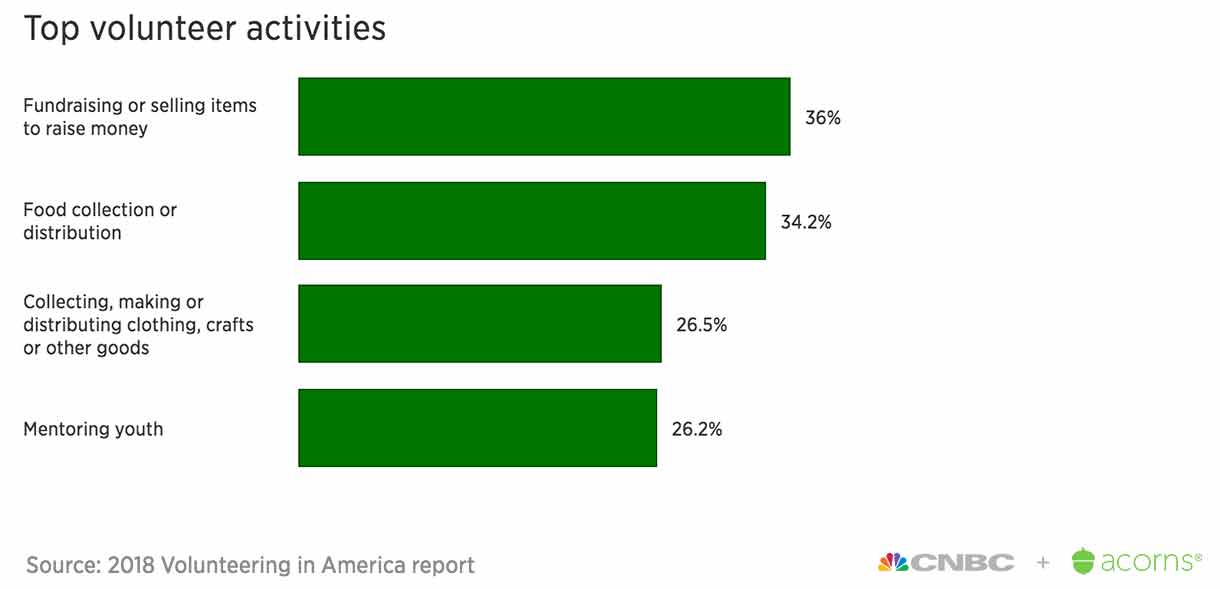GivingTuesday
‘Tis the season for giving.
With the holidays around the corner, it’s the time of year when many people think about helping those less fortunate than themselves. A global movement to encourage donations has even been created, called GivingTuesday, which began in 2012 and falls on the Tuesday after Thanksgiving.
Yet even if you you are short on cash, you can still give back.
“There are ways to express philanthropy that don’t require a big bank account,” said Sarah Nathan, associate director of the fundraising school at Lilly Family School of Philanthropy.
In fact, more than 77 million American adults volunteered with an organization in 2017, according to the 2018 Volunteering in America report from the Corporation for National and Community Service.
Religious organizations topped the list that Americans most commonly donated their time to, followed by sports or arts groups, and education or youth service groups.

“Whether it’s making someone smile, helping a neighbor or stranger out, showing up for an issue or people we care about, or giving some of what we have to those who need our help, every act of generosity counts and everyone has something to give,” said Asha Curran, CEO and co-founder of GivingTuesday.
With that in mind, here are ways you can give back — for the holiday season and beyond.
Give your time
“Being a volunteer with your time is one of the best things you can do for a nonprofit,” Nathan said.
According to the 2018 Volunteering in America report, Americans donated nearly 6.9 billion hours in 2017, worth an estimated $167 billion in economic value.
It doesn’t have to be something that requires a specific skill set. Just think about a cause you care about.
“You really just have to show up and be present and be willing to do the work,” Nathan said.
Getty Images
It could be at a large charity organization or a local one, such as a food bank or a boys and girls club.
In fact, volunteering at a small, community-based charity could make a very big difference to that organization, said Stacy Palmer editor of The Chronicle of Philanthropy.
“That is where you can see what you’re doing, in a way that, I think, feels very tangible for a lot of people,” she said.
Look around at the organizations in your community. There are also a number of websites, such as VolunteerMatch.org, that can connect you with opportunities.
Volunteer your skills
You may be a writer, graphic artist, social media wiz — or have some other expertise that could help a nonprofit.
“What nonprofits really need is often skills that people have in their day jobs,” Palmer said.

Again, look around at local groups to see where you may be able to offer your services. The Taproot Foundation also matches nonprofits with skilled volunteers.
Think outside the box
Soup kitchens and food banks are great places to donate your time. However, you can also think about other venues or activities that are overlooked in your community, Palmer said.
“Be thoughtful about things you’ve observed,” she said. “Usually you see something and think, ‘Somebody should do something about that.’
“That somebody could be you.”
Donate furniture and other goods
The next time you clean out your closet, think about donating the clothes and shoes you are no longer wearing. The same goes for any furniture or household goods you don’t need, or even your old car.
If you give them to a tax-exempt organization and you itemize your taxes, you can deduct the fair-market value of the items.
Nathan suggests considering donating to a local organization.
“The impact of your used toys and used clothes might go a little bit further in those smaller thrift stores and nonprofits,” she said.
Involve your workplace
Join a board
If you do have the time to commit, consider volunteering for the board of a charity.
That way, you can be engaged with the day-to-day operation of the nonprofit and, as a side benefit, you can network and meet people who can help your professional growth, Palmer said.
Do it in ‘bursts’
Don’t feel overwhelmed at the prospect of volunteering if you are busy. It doesn’t necessarily have to be something that is a long commitment.
“There are a lot of things can be done in bursts,” Palmer said.
“People realize that not everybody has that commitment to give an hour a week to transport someone or physically be somewhere.”
